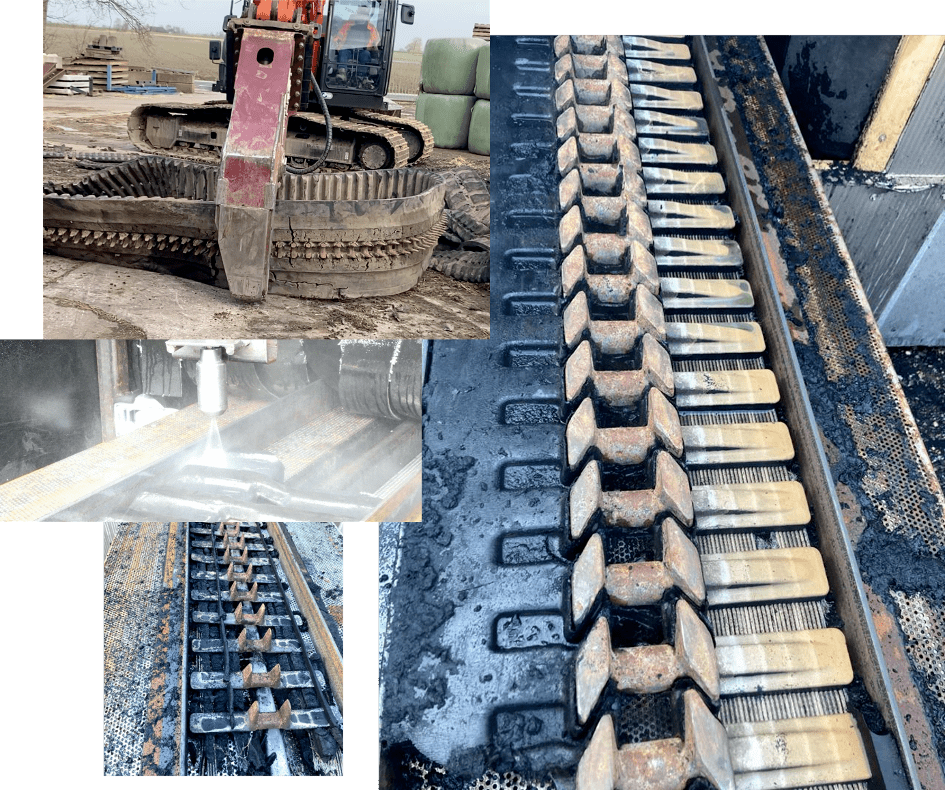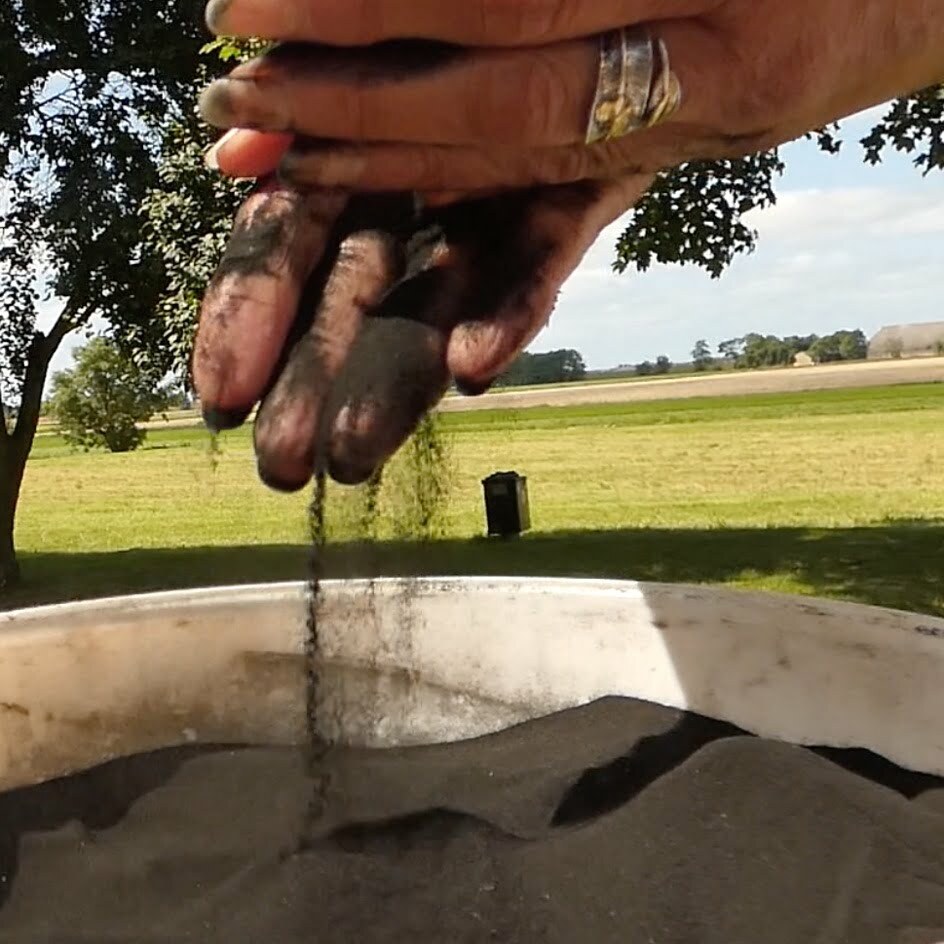Recycling rubber
Unique process
Through our unique recycling process, we have been able to economically recycle rubber tracks into a high-quality rubber powder that can be fully reused.

Collection of EOL rubber products
Sale of rubber powder

Innovative process
Project Active Rubber has devised a process in which the rubber is sprayed off the metal at high pressure. One of the advantages is that this technique can be used without any dosage of additives. Only pure water is used.
Another big advantage – probably the biggest advantage – is the fact that the rubber released can be reused for application in high value products, unlike rubber granules.
To ensure the best possible quality, we work with reputable partners.
The material we recycle is fully reused, even the metal is reused.

Good structure
Good miscibility
The extracted rubber powder consists of several fractions, from 180 µm to 2500 µm. This rubber powder is highly suitable for reuse.
Particle size can be adjusted upon customer’s request.


Goede structuur
Frequently asked questions
Is your rubber vulcanized or devulcanized?
Our rubber powder is still vulcanized, but it is so fine that it can be added to virgin rubber in very large amounts.
What do I have to pay if I turn in EOL rubber products such as tracks?
The prices per ton are market prices and they can vary. Currently (2021) between €140 and €180 per ton plus transport costs.
Why do you choose mechanical recycling and not chemical recycling?
Chemical recycling, including pyrolysis, requires more energy. Mechanical recycling is less energy intensive and the recycled powder can be added to virgin rubber while maintaining quality. As a result, the carbon footprint is much smaller.
When water jetting, isn't there a lot of use of water, and isn't that polluting?
What chemicals do you use for the process?
Only water is used in the overall process, no chemicals. The water is recycled as much as possible.
What are the particle sizes of your powder?
What is the difference in product between shredding and water jetting?
Why are you guys starting with tracks and not doing car tires yet?
Most car tires are shredded. Tracks (and other technical rubber products) cannot be shredded due to their shape and composition (blocks of steel). For this reason, they are burned, used for landfill and/or transported outside of Europe. Project Active Rubber can solve this problem.
